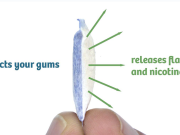The Centers for Disease Control and Prevention (CDC), has released the NHIS smoking data for 2017. The survey indicates another new record low for adult smoking rates for the first nine months of 2017 at 14.1%, down from 15.8% in 2016.
A similar drop has also been observed in relation to vaping. The report titled, QuickStats: Percentage of Adults Who Ever Used an E-cigarette and Percentage Who Currently Use E-cigarettes, by Age Group — National Health Interview Survey, United States, 2016, had indicated that vaping is actually on the decline, with 3.2% of US adults using e-cigarettes in 2016, down from 3.4% in 2015, and 3.7% in 2014.
Subsequently, the 2017 report is indicating that approximately 6.9 million Americans were current vapers, that’s a million fewer than the previous year. These are interesting figures since due to the recent alarming media headlines, the public is under the impression that vaping rates are on the increase, however this data clearly indicates the contrary.
The negative effect of the misinformation about vaping
Additionally, in response to the anti-vaping officials who claim that vaping acts as a gateway to smoking, the survey also indicated a decline in smoking amongst young adults, therefore once again dispelling the theory. Australian medical doctor and harm reduction expert Dr Attila Danko, is amongst the health experts who are outspoken about this flawed theory.
“If it was true that e-cigarettes were a massive gateway to children becoming addicted, I wouldn’t be on the side of legalising it,” said Danko earlier this month. The medical doctor explained that although e-cigarette use amongst young people has increased, this is mostly on an experimental basis and is not correlated to an increase in smoking within the same age group.
E-cig use amongst teens is mostly expermental
Danko explained that the only pattern of correlation between vaping and smoking arises from the fact that the type of people who are likely to experiment with e-cigarettes, might also be more likely to experiment with cigarettes and other tobacco products.
“But the truth is, the use among young people is mostly experimental. They have found that teenagers who tried e-cigarettes also tried smoking. They’ve said that because they tried e-cigarettes and then they tried smoking, the e-cigarettes must have led to the smoking. But it’s just not the case,” he explained.
In line with Dr. Danko’s observations and the NHIS surveys, studies from different parts of the world have indicated that in places where e-cigarette use has increased, smoking rates have decreased and ultimately vaping rates started decreasing as well. This indicates not only that vaping is not a gateway to smoking, but also that as research has suggested, vaping is not as addictive as smoking.
Read Further: Tobacco Truth












